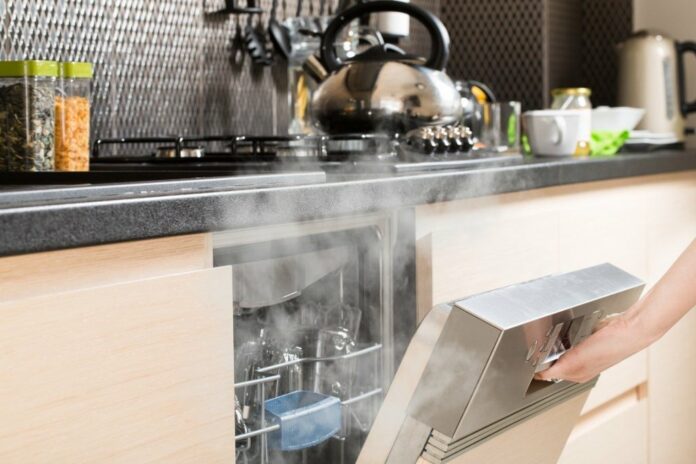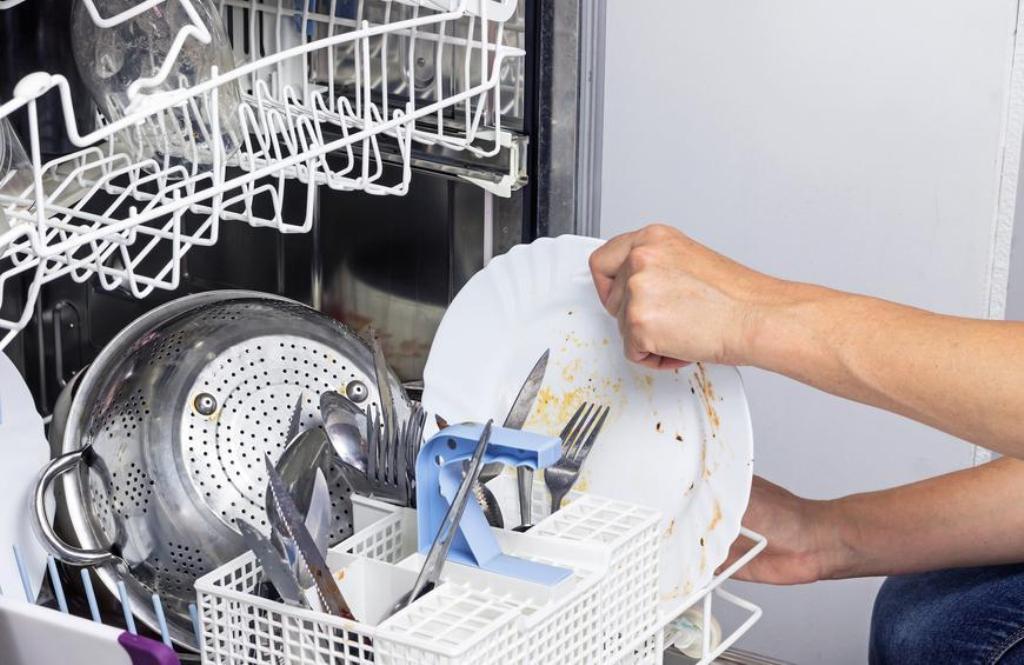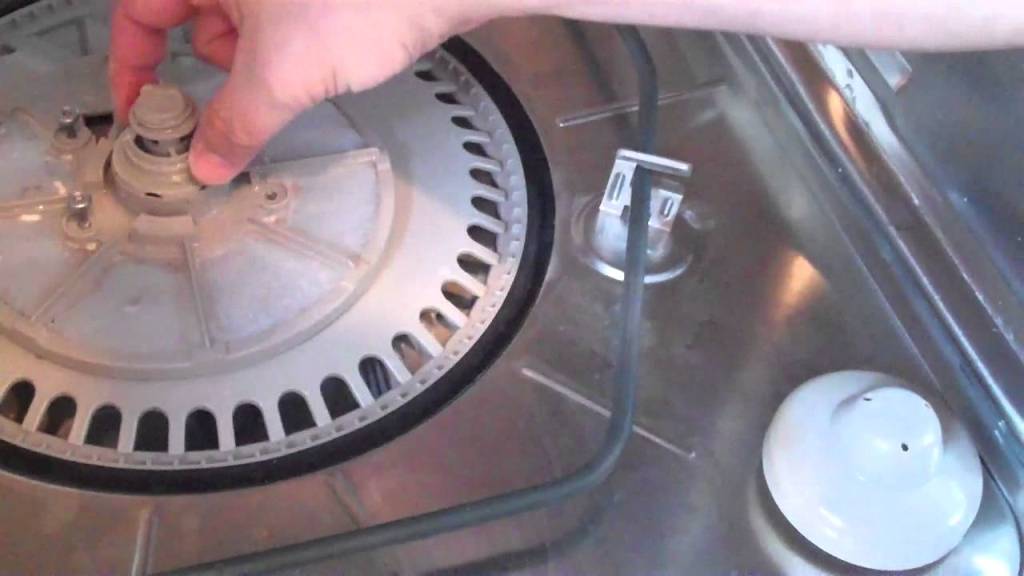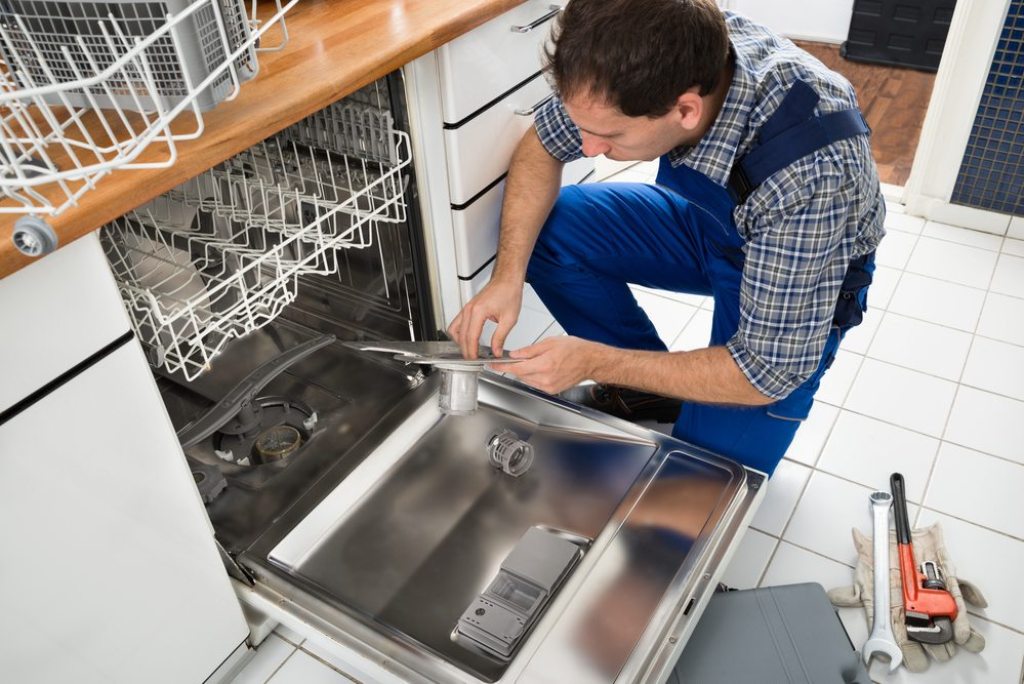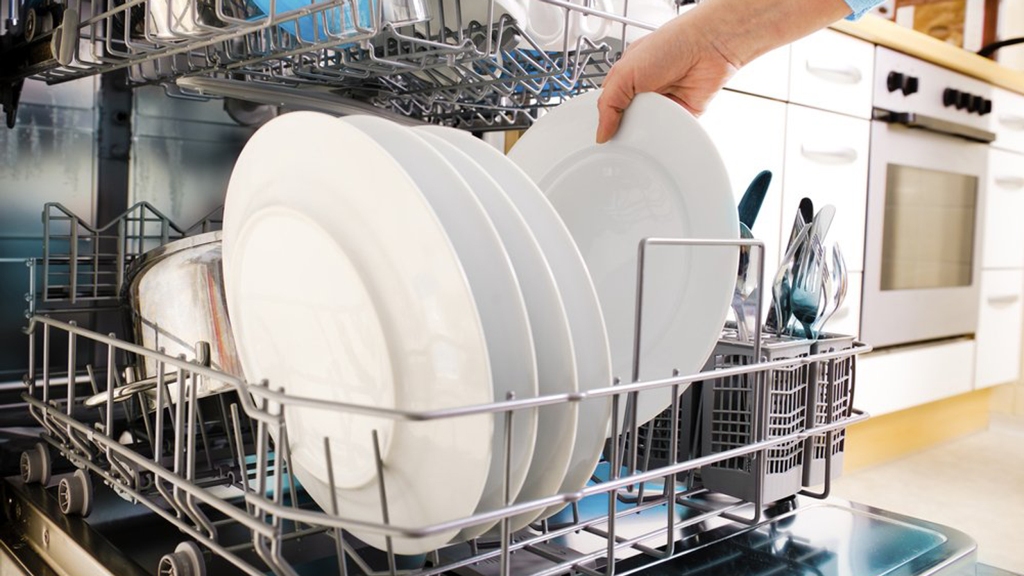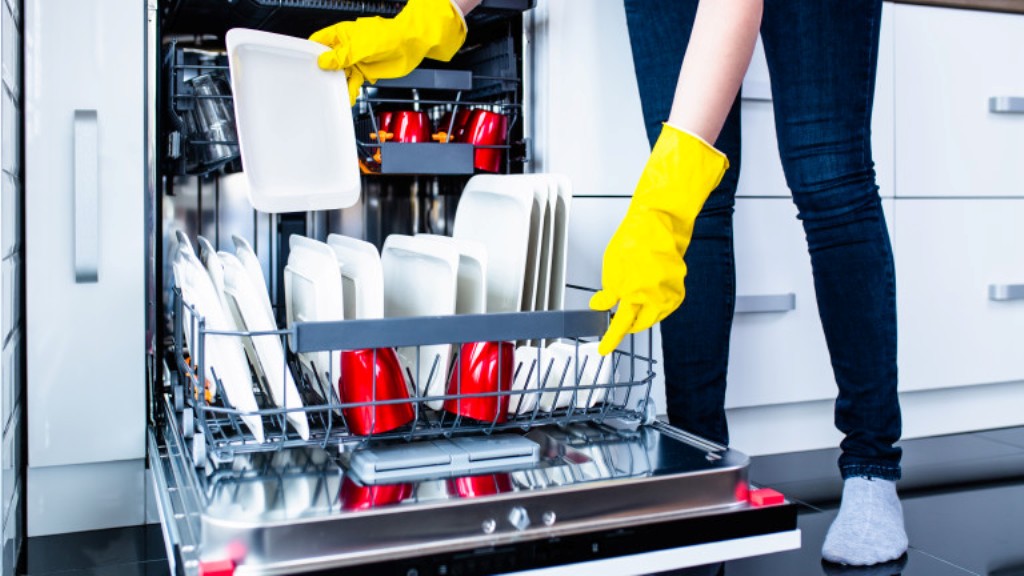If you use your dishwasher frequently, you should also learn how to properly maintain it! Check out our guide on proper dishwasher maintenance.
Most dishwashers last around ten years.
The majority, however, start getting fussy around their fifth birthday.
Food buildup in your appliance can lead to a poor-performing dishwasher and smelly dishes. It can also lead to germ buildup.
As a dishwasher owner, you may be surprised to learn that there are extra steps you can take to improve your dishwasher’s longevity and effectiveness.
What is involved in basic dishwasher maintenance?
Let’s take a look.
1. Scrape Your Dishes
Anything that sticks to your plates should get cleaned off before it gets placed in the dishwasher. Cups and plates with gluey substances like thick sauces need to get soaked before you wash them. Most dishwashers do not require pre-rinsing anymore.
Anything solid can clog your drain hose, damage the pump, or get stuck in the filter, so be sure to remove any debris. A fork or dishcloth will work just fine.
2. Running On Empty
Run a hot-water cycle on empty once in a while so that the dishwasher itself gets clean.
You can also run a cycle using a professional cleaner for dishwashers for extra shine. A little bleach can also help sanitize your machine.
If you just want to get rid of build-up, you may want to opt for an acidic substance. Lemon juice, lemonade mix, Tang, or lemon-flavored Kool-aid can all help get rid of that slippery stuff you can’t seem to scrape off.
If you use a powdery substance for build-up maintenance, you should put it in the detergent dispenser of your dishwasher and run a dish-less cycle. Any liquids can be left in a bowl on the top rack.
You can also leave vinegar in a container on the top rack and run a hot water cycle. This will wash grease, musty odors, and grime away for good.
3. The Drain Game
You should clean your dishwasher drain once a month. Before cleaning it, you need to remove the bottom dish rack. Use a damp cloth to clean around the filter and the catch basin.
It is important to remove small particles such as bones or noodles.
Next, you can unscrew the filter. Your owner’s manual can help you with this. Look up your make and model online to find it.
You will then need to rinse the filter and remove any grease or debris that is attached to it. If the filter is clogged, your dishwasher will not be able to drain properly, and your dishes won’t get clean. You can also use a wet vac.
Once you are done, you can reconnect the filter using a screwdriver. Again, you may want to consult your owner’s manual for help.
4. Clean The Filter
Your filter should also get cleaned at least once a month. You can start by removing the dishrack and any dishes. The filter is usually on the floor of the dishwasher.
The filter is a plastic cylinder that you will need to unscrew to remove. Run the filter under hot water to remove any debris, and wipe the area clean. Be sure to remove any food bits.
You will want to be sure to avoid abrasive sponges or steel wool, as this will damage your filter. If you find any holes, get a new filter right away. This will keep troublesome bits of food from making their way into your pump.
Finally, you should take a damp cloth and clean around the area.
5. Check The Arms
You will need to check the spinning arms of your dishwasher, being sure that they are free from debris. If you see anything sticking to them, carefully remove them with a toothpick.
If you need to remove the spray arms, you should be able to lift out the bottom one with a careful tug. You can remove the center wash arm with a Phillips head screwdriver.
6. Clean The Door Seal
You can use a rag and white vinegar to clean the seal between the dishwasher door and the main tub. Besides residue and particles, you also want to remove any mold. This tends to build up and cause foul odors.
7. Get Your Racks Ready
If any coating on your dishwasher racks begins to wear off, it could corrode and get into the pump. Be sure to repair any rusty areas with vinyl paint.
8. Avoid Overload
We are all tempted to throw a few extra forks into the dishwasher from time to time. Yet too much in your appliance will keep the water from flowing properly and getting your dishes clean enough.
To properly load a dishwasher, start by loading larger plates in an organized way on the bottom rack. Then, load forks and spoons in the basket with the handles facing down. Place knives with the handles up for safety.
Be sure that oversized items get placed on the sides and back of the bottom rack so that there is no overcrowding. Items with baked-on food should face down toward the spray arm. Glasses should get placed open-side down on the top rack.
9. Extra Cleaning
Make sure to clean under the door, flatware basket, gasket, and detergent dispenser. Get rid of dirty buildup around your dishwasher with a wet rag and heavy-duty cleaner.
Dishwasher Maintenance
Basic dishwasher maintenance is more than just meticulous cleaning. It will lengthen the life of your dishwasher, and save you money on professional repairs. It can also help you to hold on to flatware and utensils longer.
For more great home ideas, read our blog today.

